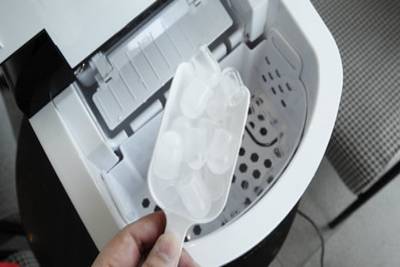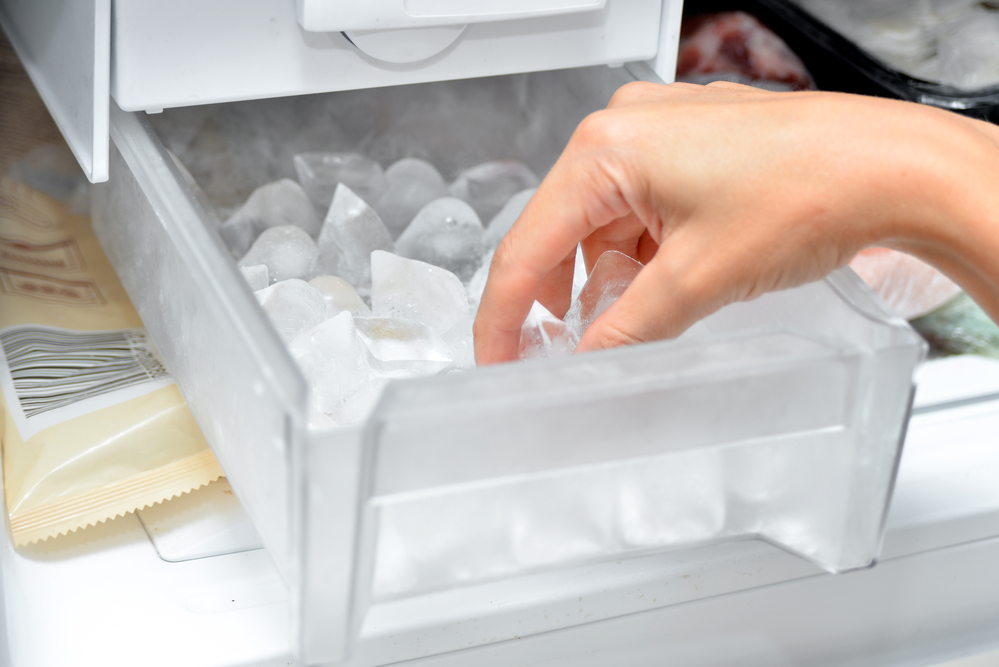The question “How does an ice maker work?” is more common than you might think. These days, you can have an ice maker built into your fridge, use commercial ice machines at a hotel, or even buy portable ice makers to take you wherever you go.
Ice production is something many of us have taken for granted over the last few years. If you’re used to using an ice mould or ice tray to make your ice cubes, and you’ve recently used an automatic ice maker for the first time, you might have found yourself intrigued by the ice-making process. After all, it’s not like we can see into the ice maker for ourselves to see how these unique devices work to produce the ice that appears in our drink.
That is, of course, unless you have one of the more expensive clear ice makers. If you’re feeling curious about your ice machine, here’s everything you need to know about how an ice machine works. Let’s get started.
How Does an Ice Maker Know to Make Ice?
One of the most complex questions most people have about an ice machine is how it knows to make ice? The simple answer is that an ice maker comes with a range of mechanical and electrical signals that tell the ice machine what to do. Ice production can be controlled on some ice machines, while others follow a simple routine of freezing and breaking up ice regularly.
Usually, a standard ice maker works by sending an electrical signal at the beginning of each ice maker cycle, which tells the water valve to switch on and fill the “ice mould”. The freezer then freezes the water to a point until the internal thermostat indicates the temperature of the ice cubes has reached the right point to be released from the freeze tray.
Once the cubes are created, a heating coil will activate using hot gas to remove the ice cubes from the mould. The ice maker ejector knives push the cubes down below the ice bin. The dispenser usually separates the tray at the front by a shift, opened when a button is pressed on the ice machine. There will also be a sensor in the storage bin to let the ice maker know when the ice produced has reached the right level.
How Do Ice Makers Make Ice So Fast?
An ice maker is designed to make ice faster than a standard set of ice trays because it uses advanced tools and electrical units. Most ice machines use an electric motor, an electrically managed water valve, and a heating unit to control refrigerators’ hot and cold air.
The Power of Electricity
Some ice makers will require a link to the plumbing line within the home to access freshwater from the water valve. Other products can be filled with water in a reservoir whenever you want to start making ice, similar to how you’d use an ice cube tray.
The icemaker begins its cycle when a refrigerator ice maker system is hooked up to electricity and water. Usually, the cycle is controlled by a simple electrical circuit and a series of switches. At the beginning of the cycle, a timed switch sends a current to a water valve positioned behind the refrigerator. The valve opens for just enough time to fill an ice cube mould.
Cooling Mode
When the mould is filled, the ice maker uses a cooling mode to make ice. Exactly how your ice maker creates ice cubes depends on the kind of device. Commercial ice makers might use a comprehensive refrigeration system. It uses high-pressure liquid and low-pressure liquid in the form of refrigerants to change the ambient temperature of the machine.
In either case, once the water in the machine has become ice, a trigger heats a coil to remove the ice from the collection tray into the bin below. The sensor in the machine will keep track to ensure there’s enough ice in the system. Some commercial ice makers also come with an arm to help break up the ice within the collection tray.
Do Ice Makers Need a Water Line?
The exact design of your ice machine will determine whether it needs access to pour water from your plumbing system. You’ll need to check whether a home plumbing line is required before installing a refrigerator with an ice machine. It’s also worth checking to see if your system comes with a water filter and other components which need to be replaced.
Sometimes, you won’t need access to a water pump to fill your ice machine. Instead, certain ice makers can be filled manually using a bottle or a jug whenever you want to make ice. Some devices come with a system for both chilled water and ice.
How Does an Ice Maker Know When to Dump the Ice?

As mentioned above, an ice maker works using a series of expansion valve processes and sensors. When you fill the ice mould in an ice machine, the water flows for just enough time to make the ice cubes and nothing more to help save your water supply.
After this, the refrigeration process begins, using heat exchanging pipes where refrigerant passes through the ice-making system to chill the water within. When the ice maker detects the water has reached a specific temperature, a shut-off arm or sensor triggers the release of hot air or a heated coil to help remove the ice from the moulds.
The refrigerator ice maker or commercial machine will then release the ice cubes. Your ice maker motor might also help to push ice out of the moulds in the machine. Watching ice production is essential because broken mechanisms may prevent the ice from dropping correctly.
Understanding Ice Machines
Hopefully, this article has given you an answer to ‘how does an ice maker work’.
Ice machines can be difficult to understand at first. However, the reality is the whole system works on a series of sensors and triggers. Whether your ice machine works through a simple expansion valve system, high-pressure vapour, or more complex tools, it’ll usually be much faster and more efficient than making ice manually.

